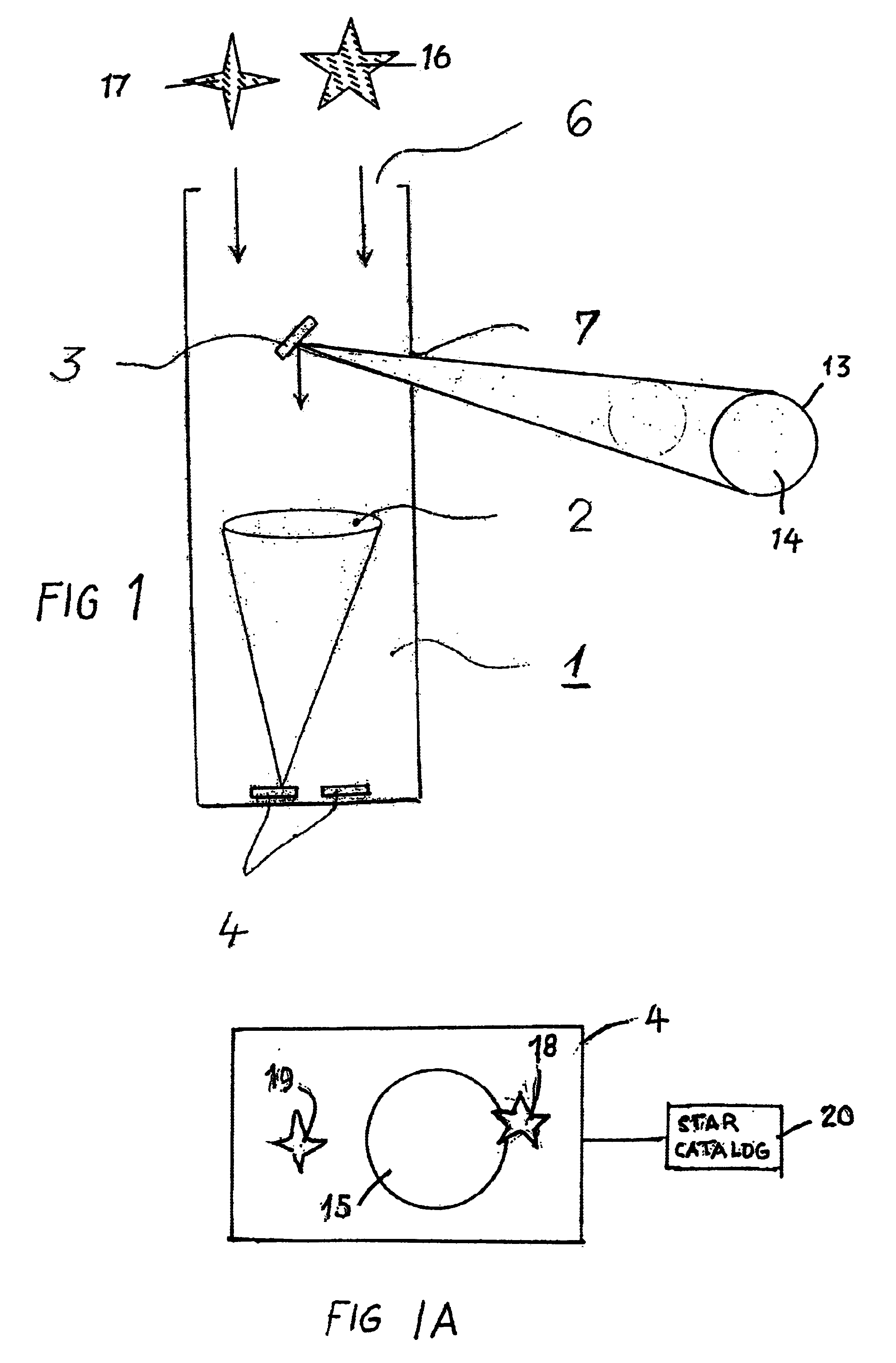Combined earth/star sensor system and method for determining the orbit and position of spacecraft
a technology of satellite orbit and position determination, which is applied in the direction of optical radiation measurement, navigation instruments, and instruments for comonautical navigation, can solve the problems of degrading the quality of measurements, affecting the accuracy of measurements, and the arrangement of several solar sensor heads is expensive, so as to simplify the integration and inherent radiation resistance, the effect of low mass and good stability
- Summary
- Abstract
- Description
- Claims
- Application Information
AI Technical Summary
Benefits of technology
Problems solved by technology
Method used
Image
Examples
Embodiment Construction
[0023]The combined earth-star sensor system 1 shown in FIG. 1 comprises a common optical arrangement 2, a deflection mirror 3, image pickup devices 4 and windows 6 and 7 for earth and star observation.
[0024]The system shown is in particular characterised in that the observation direction to the earth differs from the observation direction to the stars.
[0025]Starlight enters the window 6, passes the little deflection mirror 3, reaches the common optical arrangement 2 and is focussed onto the image pickup device 4. The light from the earth enters through the window 7, impinges on the deflection mirror 3 which directs it to the common optical arrangement 2. The common optical arrangement 2 focuses the light from the earth on the image pickup devices 4. In relation to a common optical arrangement 2, the image pickup devices 4 are arranged on a common focal plane according to a specified pattern. FIG. 3 provides an example of a possible arrangement of four image pickup devices which prov...
PUM
 Login to View More
Login to View More Abstract
Description
Claims
Application Information
 Login to View More
Login to View More - R&D
- Intellectual Property
- Life Sciences
- Materials
- Tech Scout
- Unparalleled Data Quality
- Higher Quality Content
- 60% Fewer Hallucinations
Browse by: Latest US Patents, China's latest patents, Technical Efficacy Thesaurus, Application Domain, Technology Topic, Popular Technical Reports.
© 2025 PatSnap. All rights reserved.Legal|Privacy policy|Modern Slavery Act Transparency Statement|Sitemap|About US| Contact US: help@patsnap.com



